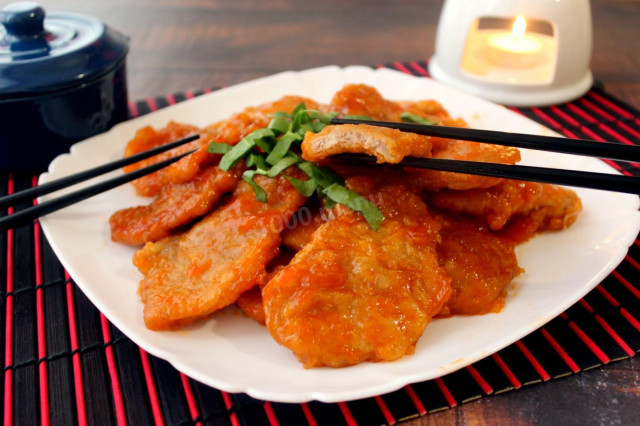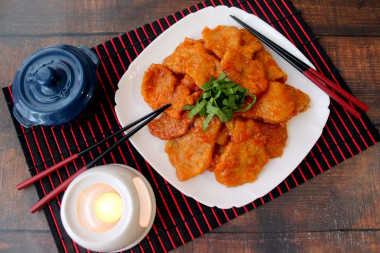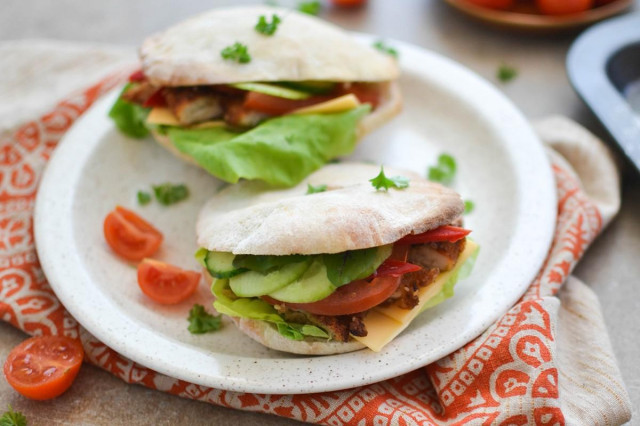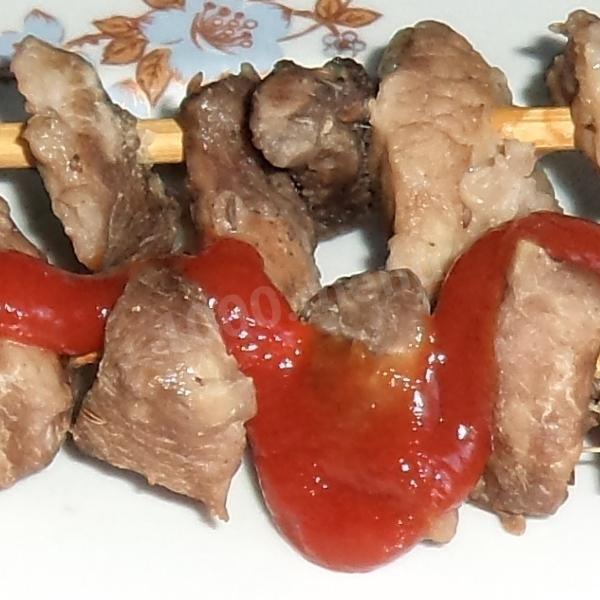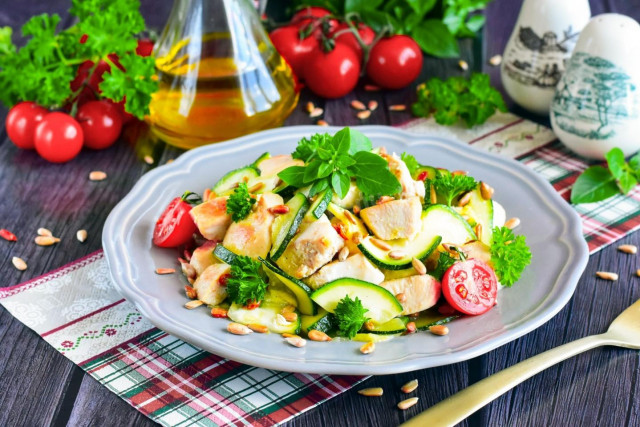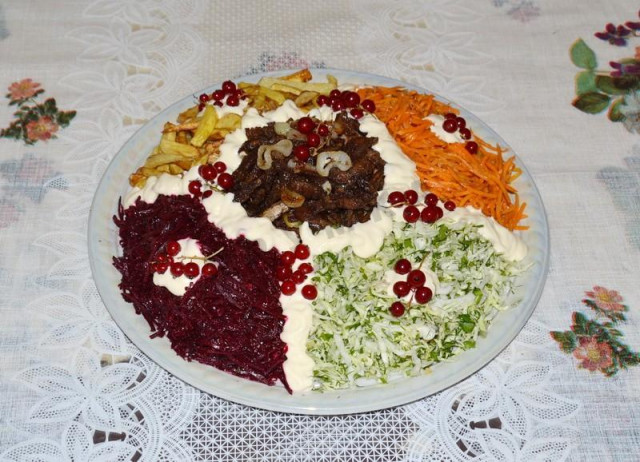Composition / ingredients
Step-by-step cooking
Step 1:
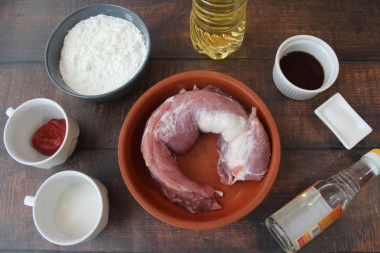
How to make gubajou in sweet and sour sauce in Chinese? Prepare the products. Do not be surprised that there are no vegetables or canned pineapples in the composition of my gubajou. Literally, gubajou translates as pork in starch, the rest of the additives are only interpretations of this dish and rather a modification introduced into Chinese cooking from the West. Use only corn starch, potato starch will not work, it will not give such a crispy crust.
Step 2:
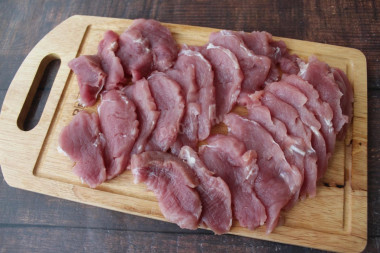
Meat for this dish is better to take low-fat. I preferred the tenderloin, but you can also use carbonade. Rinse the pork, dry it with paper towels and cut into thin slices. If you plan to add vegetables to the dish, then it is better to cut pork as well as vegetables (straws or cubes). It will be more convenient to eat such a dish, and it will look more aesthetically pleasing.
Step 3:
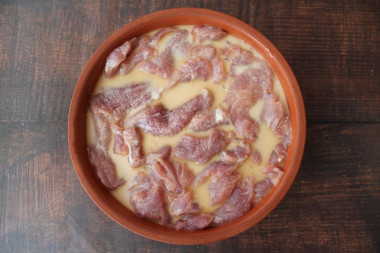
Pour 3 tablespoons of starch into a deep bowl, pour soy sauce and cold water, mix. Put the pork slices in this marinade, mix again so that all the pieces are covered with marinade and leave the pork to marinate for 20 minutes. I advise you to stir the contents of the bowl regularly, as the starch settles on the bottom.
Step 4:

Pour vegetable oil into the dishes in which you will fry pork and put it on the stove to warm up. The amount of oil will greatly depend on the depth and width of the dishes in which you will cook. It is better to take deep dishes, as the oil splashes strongly. Pour the remaining starch into a bowl. Roll each piece of pork in starch and deep fry on both sides until golden brown.
Step 5:
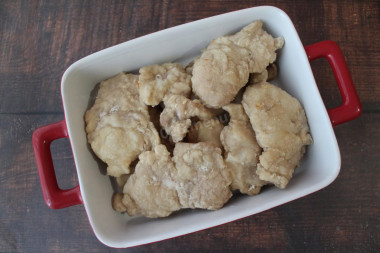
Put the fried meat in a clean bowl. It should turn out to be a nondescript gray color. In order for the pieces of meat to have a crispy crust, it still needs to be fried in a clean frying pan with the addition of vegetable oil. The breading should acquire a golden color.
Step 6:

Prepare all the ingredients for the sauce, the cooking process will be very fast, so all the products should be at hand. You can take any vegetable oil, use ketchup or sauce instead of tomato paste. Vinegar essence can be replaced with table vinegar in the right proportion. Or use rice vinegar.
Step 7:
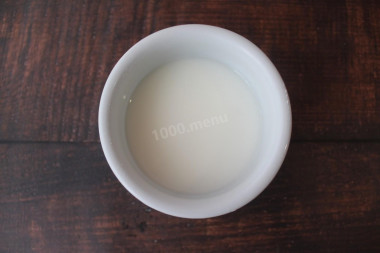
How to make sauce? In a small container, mix cold water with corn starch. Set aside.
Step 8:

Take a wok pan, put it on medium heat. You can also use an ordinary frying pan, but the high sides will protect from splashes, and the wok is more suitable for fast frying of products. Mix sugar, salt and vinegar essence in a preheated frying pan. When the mass begins to melt, add tomato paste and vegetable oil. Mix it up. If the sugar has crystallized, do not worry, when adding water with starch, it will melt.
Step 9:
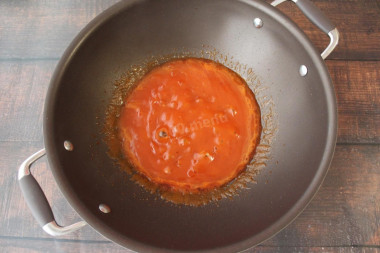
When the mixture starts to boil, quickly stir the previously mixed cold water with starch again and pour it into the pan. It is necessary to mix the water, because during the time that you prepared the sauce, the starch will settle on the bottom. Cook the boiling sauce for about a couple more minutes.
Step 10:

Add the fried pork pieces to the sweet and sour sauce, stir them for a couple of minutes so that the sauce is evenly distributed over the meat. There should be no sauce left in the pan, it should cover all the pieces, as if to stick. Place the gubajou on a platter and serve to the table. Enjoy your meal!
This is a dish of the northeastern regions of China. Gubajou was invented by chef Jen Xin Wen, who worked for the Harbin mayor Duxiu Ying during the reign of the Guangxi Emperor. The dish was invented especially for Russian guests who often came to visit the mayor. The chef did not lose, the combination of sour and sweet tastes was to the liking of foreigners.
If desired, at the time of adding fried pork to the sweet and sour sauce, you can add chopped vegetables (carrots, bell peppers, onions) or pieces of canned pineapples to the dish. This will be a more familiar version of gubajou.
Since the degree of salinity, sweetness, bitterness, sharpness, acid, burning is individual for everyone, always add spices, spices and seasonings, focusing on your taste! If you put some of the seasonings for the first time, then keep in mind that there are spices that it is especially important not to shift (for example, chili pepper).
Any oils are useful only until a certain temperature is reached - the point of smoking, at which the oil begins to burn and toxic substances, including carcinogens, are formed in it. How to determine the roasting temperature and choose the best oil for frying, and which is better not to use at all, read here .
Important! An incorrectly selected frying pan can ruin even the best recipe. All the details on how to choose the perfect frying pan for different dishes read here .
Caloric content of the products possible in the composition of the dish
- Pork fat - 333 kcal/100g
- Pork meat - 357 kcal/100g
- Pork - low-fat roast - 184 kcal/100g
- Pork chop on a bone - 537 kcal/100g
- Pork - schnitzel - 352 kcal/100g
- Pork shoulder - 593 kcal/100g
- Boar's leg - 113 kcal/100g
- Pork - 259 kcal/100g
- Soy sauce - 51 kcal/100g
- Granulated sugar - 398 kcal/100g
- Sugar - 398 kcal/100g
- Vegetable oil - 873 kcal/100g
- Tomato paste - 28 kcal/100g
- Water - 0 kcal/100g
- Corn starch - 329 kcal/100g
- Acetic essence - 11 kcal/100g

